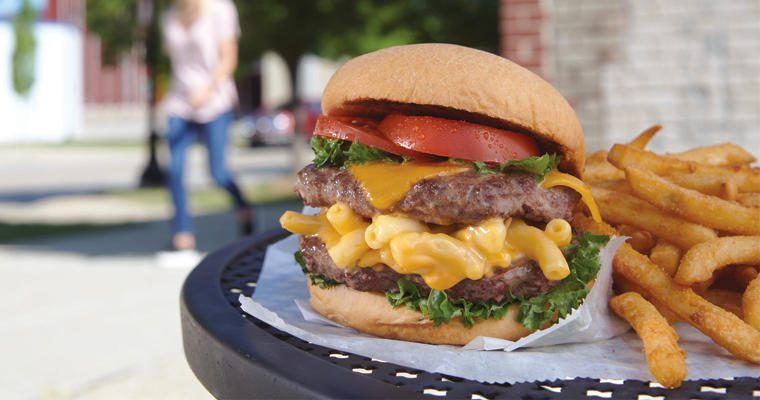It’s time to let the cattle out of the bag: Not all burgers are created equal. There’s a lot to consider—fat content, burger grind, blend and texture all play into the perfect patty. When it comes to burgers, it’s important to have a method to your meat-ness.
In the burger world, fat equals flavor and juiciness. The fat content of ground beef is represented by “slashed” numbers, such as 80/20, indicating 80% lean and 20% fat. Many sources suggest 70/30 is ideal, but there’s no perfect ratio. Meat with higher fat content will shrink as some of the fat renders out, and meat with less fat content (15% or lower) won’t be as juicy or flavorful.
“Source grinds”—meat sourced from preferred parts of the cow—are popular. Examples include:
- Chuck. This well-marbled, well-balanced lean-to-fat cut comes from the cow’s shoulder and results in juicy, beefy flavored burgers. Chuck is often the base with which custom blends are made.
- Brisket. Think Texas barbecue on a bun. Its high fat content brings a beefy flavor to burgers. Because a little goes a long way when it comes to flavor, it’s a great choice for blending with other cuts.
- Prime rib. As a steak, this is one of the most delicious cuts, a premium part known for its decadent fat marbling. When ground for burgers, this cut tastes best and retains its tenderness when not cooked beyond “medium” doneness.
- Round. This is a lean hind cut known as a “value option.” If you are looking to create a lean burger, round is a good choice. If cooked beyond “medium,” it becomes less juicy and flavorful.
- Sirloin. This top-quality beef is known for being lean and tender. While sirloin has a good amount of flavor, it benefits from being blended with meat that has a higher fat content, such as chuck, brisket or short rib.
- Skirt (hanger steak). This is a tougher cut of meat, but it brings a tart and tangy flavor when blended with other cuts in a thick burger patty.
Diners notice source grinds, perceiving them to offer better quality and satisfaction, according to BurgerCravings.com. This presents an opportunity to menu them as a premium burger experience.
Another trend is blended proteins, mixing two types of ground beef (chuck and brisket) or creating a signature patty by combining beef with poultry (ground chicken or turkey) or pork (ground bacon or sausage). Seasoning also creates unique flavor combinations.
A great grind can lose its appeal if you overlook the burger surface. The surface affects cook time, texture and appearance. Flat patties puff up during cooking as connective tissues shrink. Creating a divot in the center of the patty prevents the burger from bulging. Instead, the meat will tighten like a belt around the indentation, creating an even thickness and better presentation.
Paying attention to grind, fat content and texture adds up to the best burger experience. Ask your Gordon Food Service Sales Representative for suggestions to enhance your burger menu.











